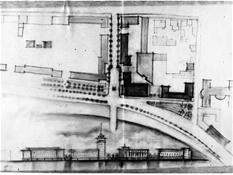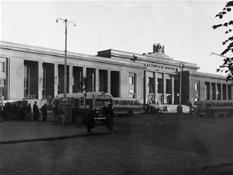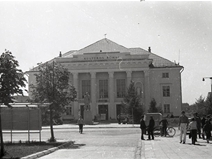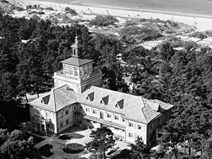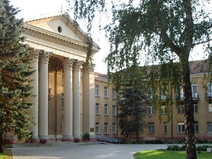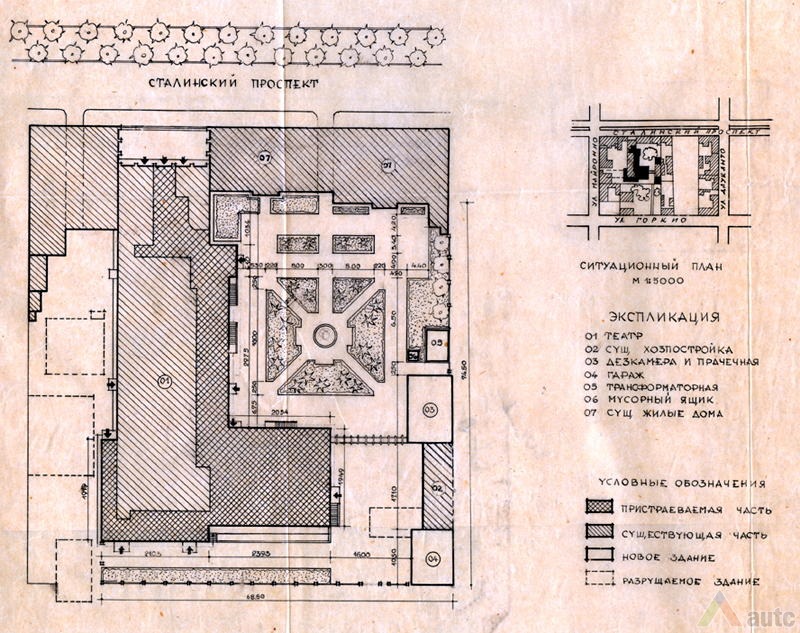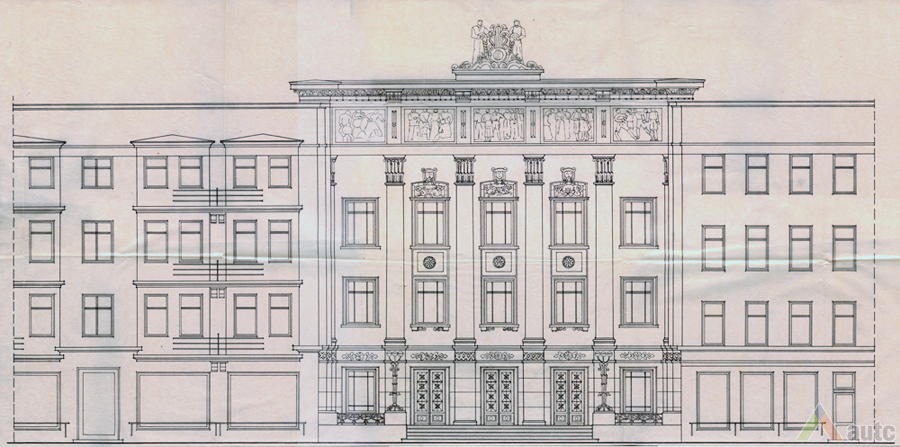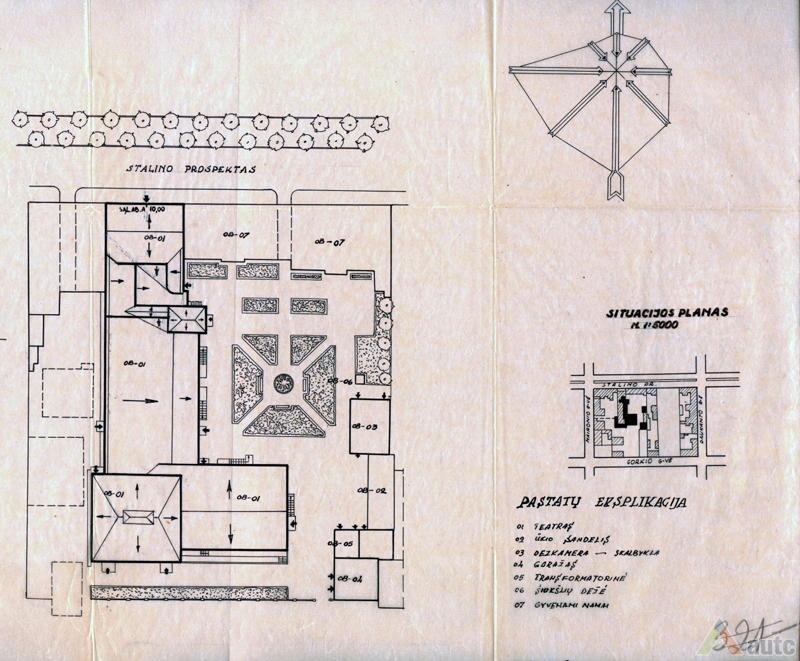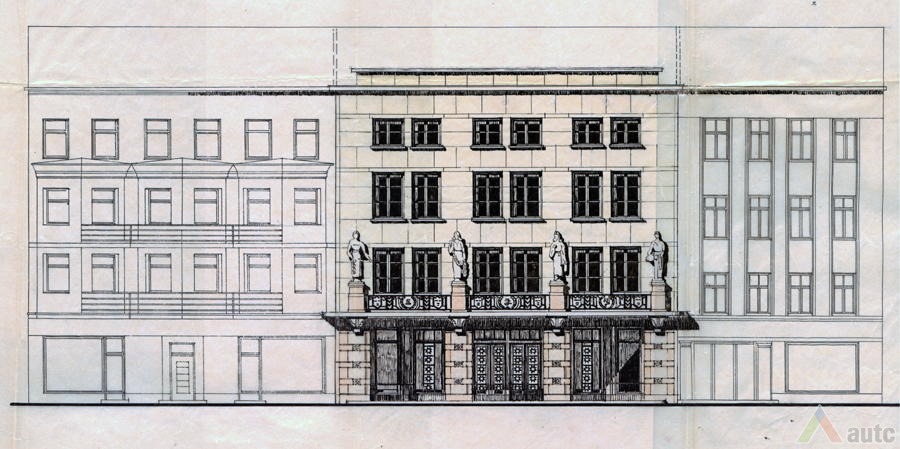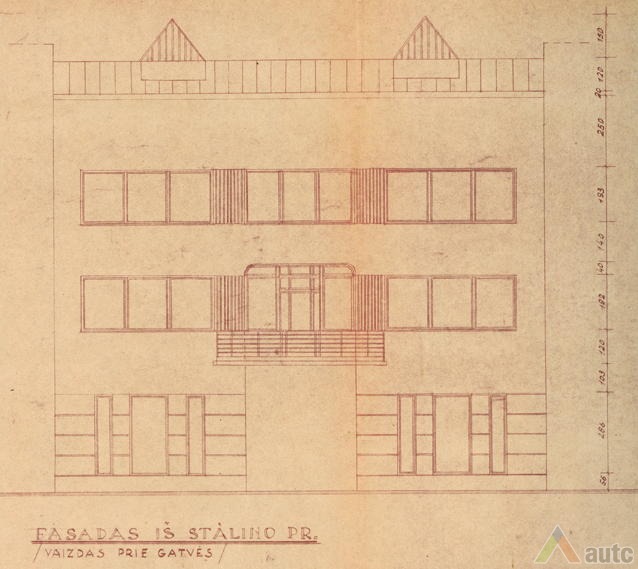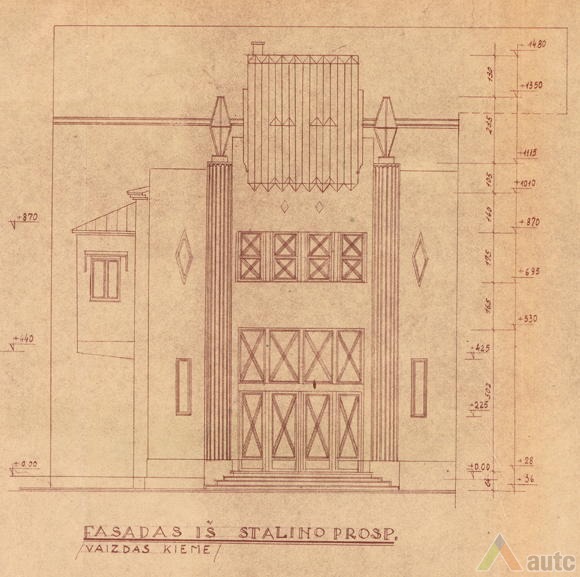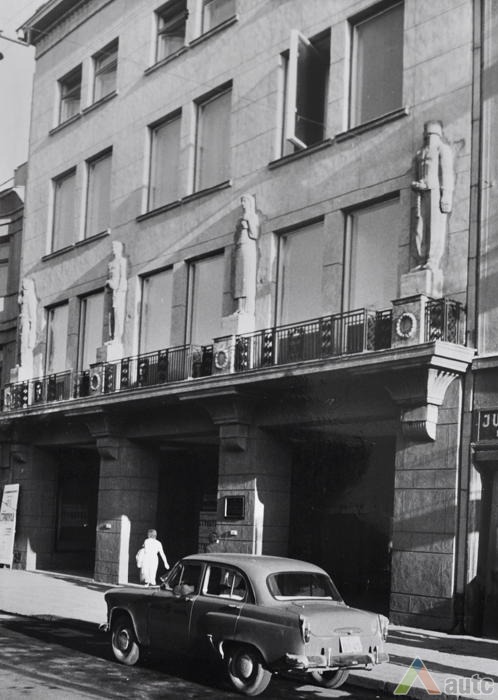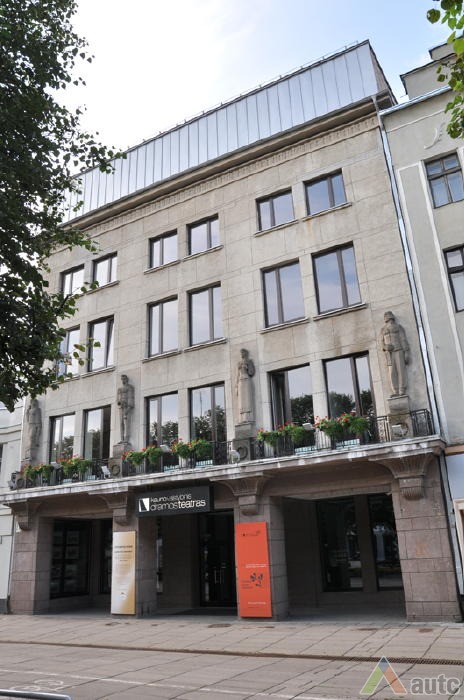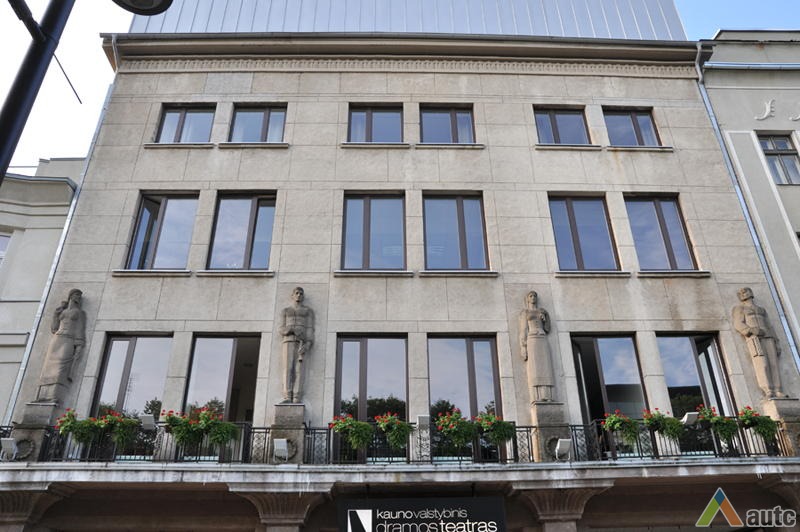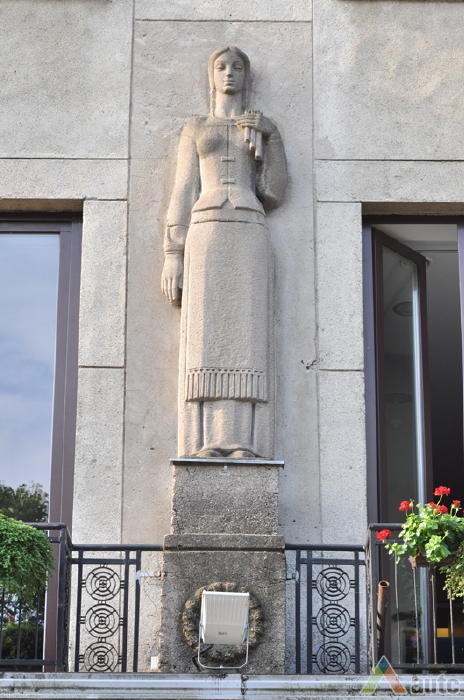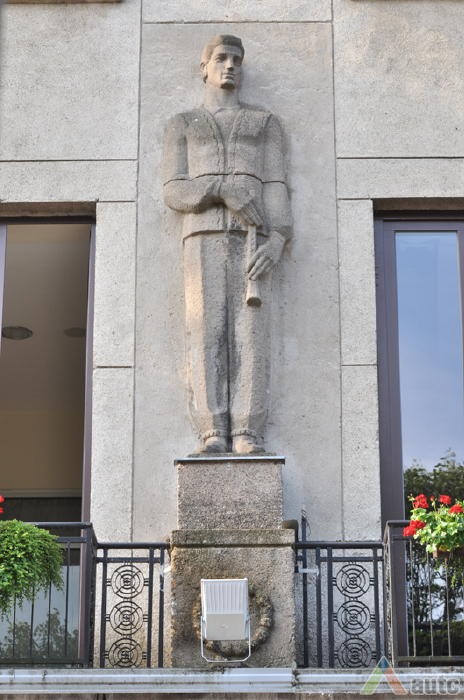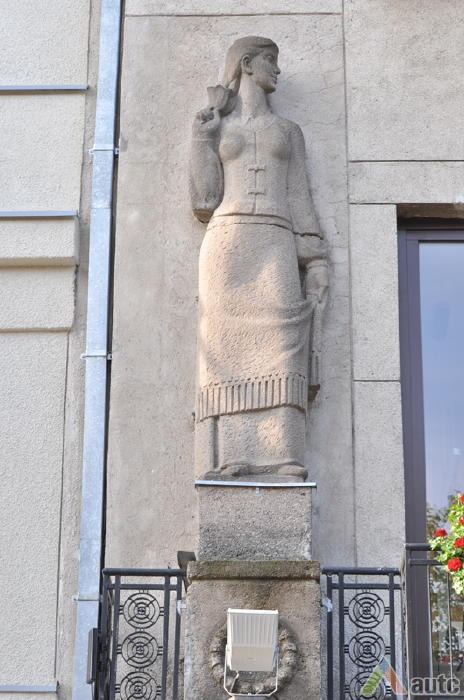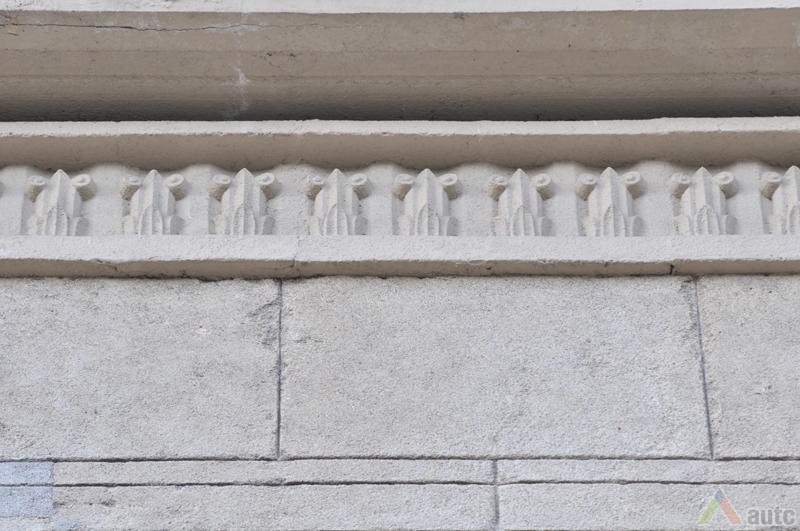The reconstruction of the Young Viewer's Theatre (the theatre was established in the place of the former cinema theatre Metropolitain built in 1928) is one of the most unique objects of social realism stylistics characteristic of the Stalinian era in Kaunas. The emergence of an important public building in the city under the conditions of that time was rather strictly regulated. The project task had to be compatible with "The Provisional Norms for Design and Construction of Theatres" drawn up and published by the Art Affairs Committee of the USSR Council of Ministers". The task was formed by the Board of the Chief Architect of Kaunas City and endorsed by Letter No 1312 of 26 September 1950, which was approved by the Board for Art Affairs of the USSR Council of Ministers on 15 April 1951.
Back then, the architect Kazimieras Bučas had to draft even several projects. One of them, dated 1953, was especially decorative and close to the classics of social realism. The following project, dated 1956, after Stalin's death and the famous 1955 Resolution of the Central Committee of the USSR and the USSR Council of Ministers "On Elimination of Excesses in the Design and Construction", was far more modest. The explanatory note prepared by K. Bučas in 1952 gives an abstract description that "In terms of architecture, the façade must be consistent with the architectural character of Kaunas City. To achieve the character of the intended purpose of the building, it is projected to use light effects [neon tubes were used in the final project], adequate ornaments and other decorations characteristic of theatres." Such façade sculptures illustrating the functional type of the theatre seen in both projects are an obvious indication of exceptionality of the object.
Nevertheless, we should not forget that a unique urban and architectural structure developed in the interwar period was lost in the design of this significant object reflecting the early Soviet period. Though the project task specified that "the architectural solution shall be in accord with the environment and the intended purpose by fusing together into a harmonious unity with the existing building", the old stylish art deco façade of the former cinema theatre and the original passage were destroyed
Vaidas Petrulis
![<p style="text-align: justify;">The reconstruction of the Young Viewer's Theatre (the theatre was established in the place of the former <a href="public/HeritageObject.aspx?id=994">cinema theatre <em>Metropolitain </em></a>built in 1928) is one of the most unique objects of social realism stylistics characteristic of the Stalinian era in Kaunas. The emergence of an important public building in the city under the conditions of that time was rather strictly regulated. The project task had to be compatible with "The Provisional Norms for Design and Construction of Theatres" drawn up and published by the Art Affairs Committee of the USSR Council of Ministers". The task was formed by the Board of the Chief Architect of Kaunas City and endorsed by Letter No 1312 of 26 September 1950, which was approved by the Board for Art Affairs of the USSR Council of Ministers on 15 April 1951.</p>
<p style="text-align: justify;">Back then, the architect Kazimieras Bučas had to draft even several projects. One of them, dated 1953, was especially decorative and close to the classics of social realism. The following project, dated 1956, after Stalin's death and the famous 1955 Resolution of the Central Committee of the USSR and the USSR Council of Ministers "On Elimination of Excesses in the Design and Construction", was far more modest. The explanatory note prepared by K. Bučas in 1952 gives an abstract description that "In terms of architecture, the façade must be consistent with the architectural character of Kaunas City. To achieve the character of the intended purpose of the building, it is projected to use light effects [neon tubes were used in the final project], adequate ornaments and other decorations characteristic of theatres." Such façade sculptures illustrating the functional type of the theatre seen in both projects are an obvious indication of exceptionality of the object.</p>
<p style="text-align: justify;">Nevertheless, we should not forget that a unique urban and architectural structure developed in the interwar period was lost in the design of this significant object reflecting the early Soviet period. Though the project task specified that "the architectural solution shall be in accord with the environment and the intended purpose by fusing together into a harmonious unity with the existing building", the old stylish art deco façade of the former cinema theatre and the original passage were destroyed</p>
<p style="text-align: justify;"><em>Vaidas Petrulis</em></p>](https://autcserver.baco.lt/api/images/heritage/98F831A3-269A-43AB-BA6B-59F7BB8F0002)
